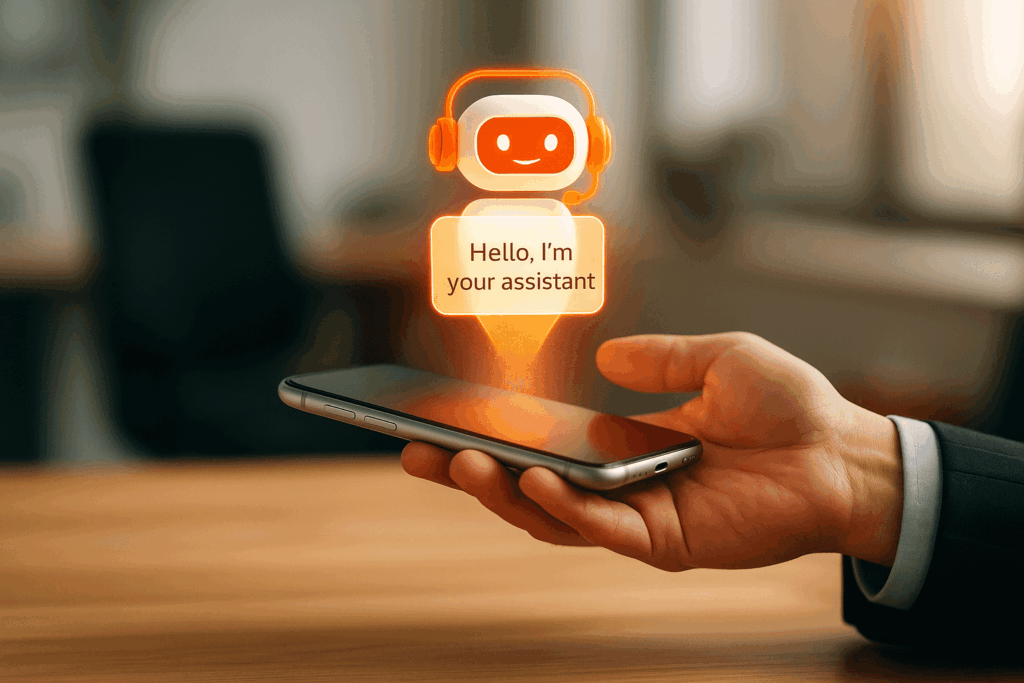Discover how creative founders are using AI and worldbuilding tools to design immersive, story-driven apps that emotionally connect with users
Table of Contents
Why Worldbuilding Tools Are the Secret to Building Immersive Apps in 2025
Worldbuilding is no longer just the realm of fantasy writers and game designers, it’s quickly becoming a strategic advantage for app founders building the next wave of immersive, story-driven products.
The emotional shift from utility to experience
In 2025, consumers aren’t just downloading apps for functionality, they’re seeking meaning, immersion, and emotional connection. Nowadays, consumers prefer emotional engagement as a key factor in their digital product choices. This signals a turning point: successful apps must go beyond features and begin telling stories.
Worldbuilding tools, once reserved for novelists or RPG creators, now empower founders to design apps with narrative logic, character progression, and user-personalized arcs, adding emotional depth to digital interactions. Platforms like Summon Worlds and AI Dungeon are leading examples of this shift, combining artificial intelligence with structured creativity to build worlds users want to stay in.
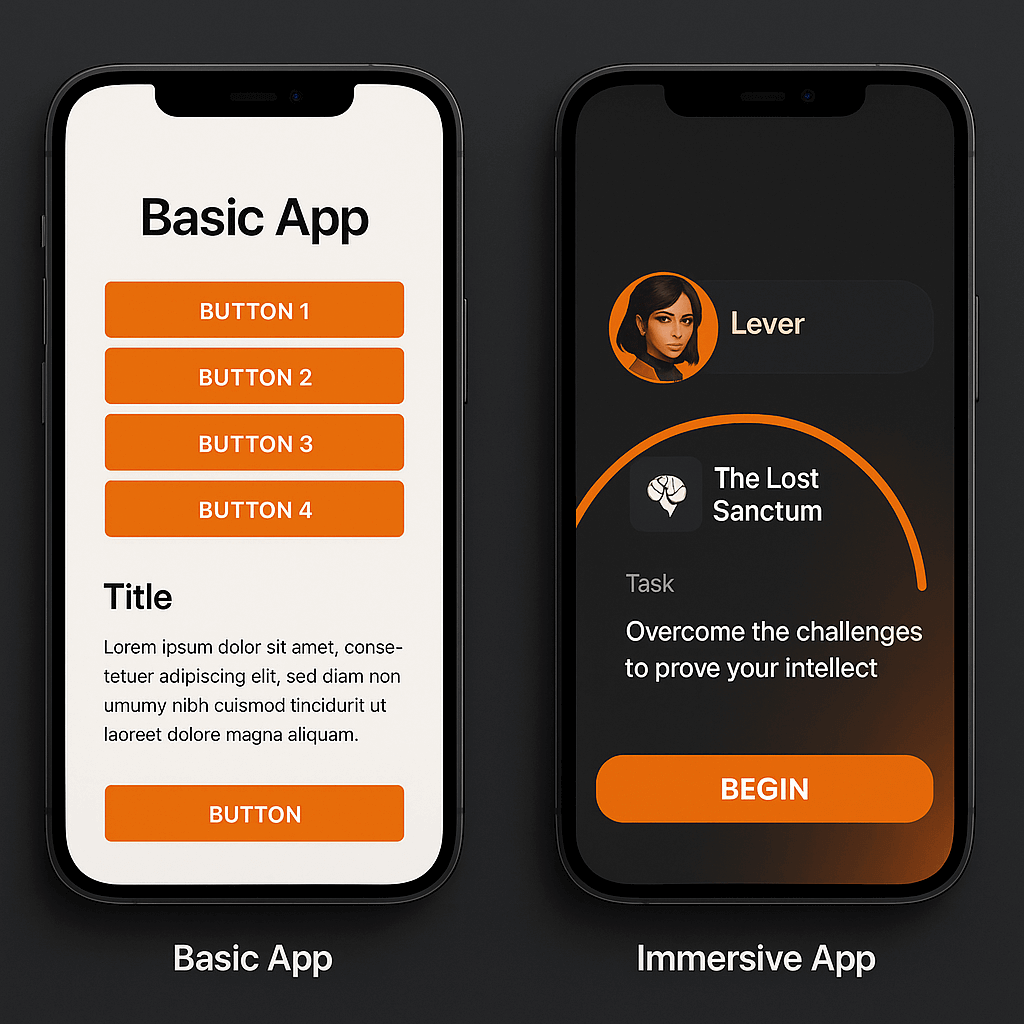
What creative founders are doing differently
Forward-thinking startup founders are applying worldbuilding frameworks as UX design tools. Rather than planning features in isolation, they’re crafting product narratives with interactive layers, letting users shape their journey inside an app, much like a character in a story. This strategy not only boosts engagement and retention but also differentiates their product in a saturated marketplace.
Founders who understand the psychology of story, and pair it with the power of AI tools, are redefining what apps can be. In this article, we’ll explore how worldbuilding tools are fueling the creative edge for product innovators, how to turn them into AI-driven features, and what to look for in the right development partner.
From Fiction to Function: What Are Worldbuilding Tools and Why Do They Matter to Founders?
Worldbuilding tools are moving beyond fantasy fiction and finding their place in the startup world, especially for founders who want to design immersive, AI-powered products that stand out in saturated markets.
What is a worldbuilding tool (in product terms)?
Worldbuilding tools were originally created to help writers, game designers, and filmmakers build complex universes, complete with characters, lore, maps, and timelines. In today’s tech landscape, however, these same tools are being adapted as frameworks for product design and app UX.
Instead of creating a fantasy realm, founders now use worldbuilding structures to craft personalized user journeys, modular content blocks, and branching logic that reacts dynamically to user input. Platforms like Summon Worlds use AI-driven narrative scaffolding to help authors structure their fictional universes, and that same logic can be applied to how users navigate digital products.
In short, a worldbuilding tool in a product context is a system that lets founders:
- Define the internal logic of an app or platform
- Create consistent narrative layers that evolve with the user
- Use modular storytelling for onboarding, gamification, and retention
This shift is about treating the app not as a static tool, but as a living world that the user steps into, where their actions shape the experience.
Why they matter for app creators in 2025
The bar for engagement has been raised. According to Salesforce’s State of the Connected Customer Report, 73% of customers say they feel brands treat them as unique individuals, up from just 39% in 2023. This shift reflects a growing demand for personalized, emotionally intelligent experiences. Today’s users no longer want to simply complete tasks; they want to feel like characters inside a story, guided, challenged, and emotionally invested.
Founders and product managers who adopt worldbuilding tools:
- Gain a strategic UX edge by making their apps more immersive
- Enable AI personalization that adapts the narrative to user behavior
- Increase session time, emotional engagement, and retention
By 2026, apps that don’t integrate some form of adaptive or story-driven UX may struggle to compete, particularly in the SaaS, creative, education, wellness, and gaming niches.
This is why many forward-thinking founders now treat narrative logic the same way they treat data logic, as core infrastructure
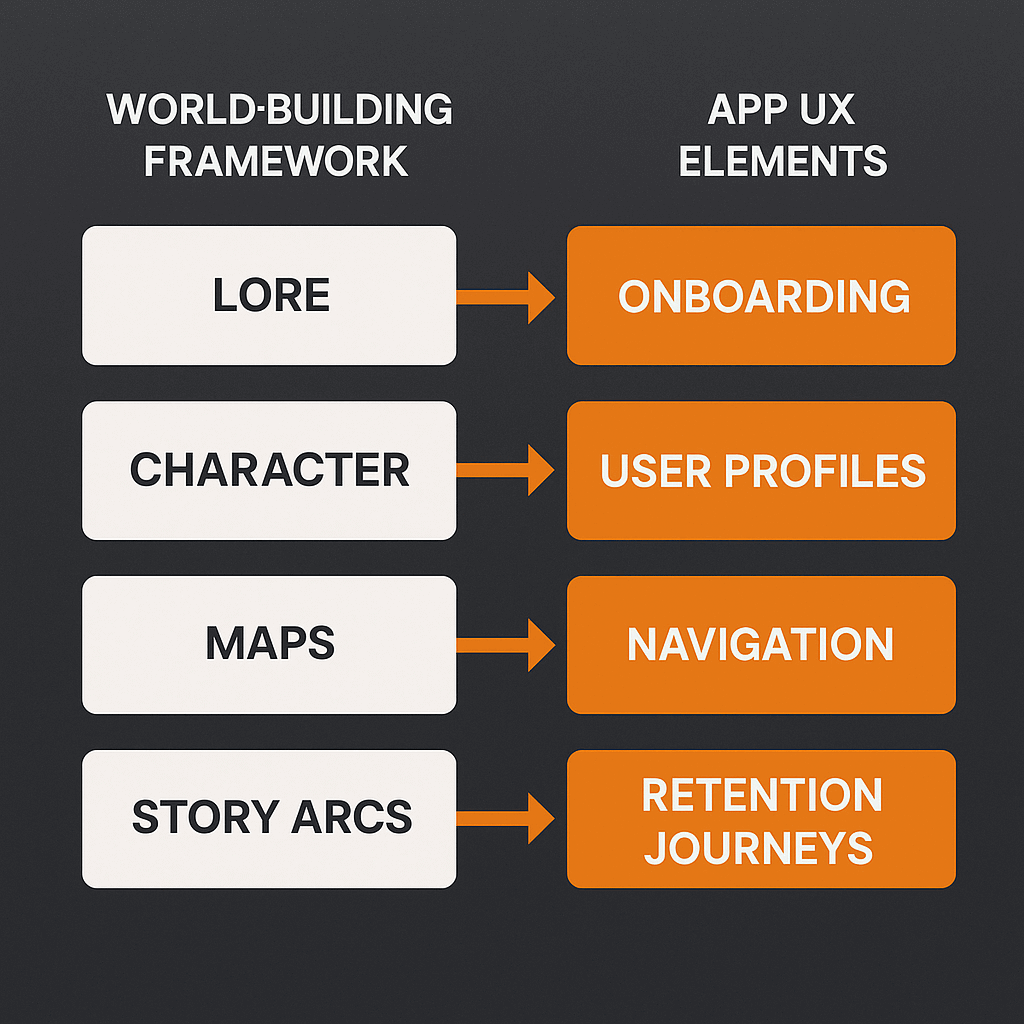
Examples of platforms using narrative logic
Several creative tech platforms are already paving the way. Here are three notable examples:
- Summon Worlds
A platform for authors that helps build entire fictional worlds using AI worldbuilding tools, including character databases, relationship trees, and dynamic lore generation. Its backend logic could inspire onboarding flows or narrative layers in apps serving creators or educators. - AI Dungeon
A generative storytelling app that responds to user input to unfold unique stories. Founders can learn from its prompt-based interface, an early model of the “prompt app” UX pattern. - Replika
An AI companion app that evolves its personality and storyline over time, depending on the user’s engagement. This model of adaptive storytelling shows how AI storytelling can drive emotional connection in mobile UX.
These tools show us that worldbuilding isn’t just a creative exercise, it’s a product strategy.
As generative AI becomes more powerful, founders who know how to build with narrative logic will be better positioned to lead new categories of immersive, meaningful applications.
Wondering what custom app development really looks like with AI?
How Creative Founders Are Using Worldbuilding Tools to Build AI-Powered Products
Creative founders are no longer just building apps, they’re building experiences, powered by narrative frameworks and generative AI. Worldbuilding tools are now playing a foundational role in helping these entrepreneurs design products that feel personalized, immersive, and emotionally intelligent.
Turning AI storytelling into product features
As large language models (LLMs) become more accessible, founders are embedding AI storytelling directly into their product interfaces. This goes far beyond chatbots or auto-generated text. Instead, they’re using AI storytelling to structure user journeys, adjust in-app content dynamically, and even craft fictional universes that evolve based on interaction.
For example:
- An education app may use narrative arcs to guide students through levels, quests, or challenges
- A mental wellness app might offer story-driven experiences that adapt to user moods or journaling patterns
- An AI art generator platform like Summon Worlds helps users build out AI-generated content across multiple dimensions, characters, worlds, events, all of which can translate into product logic or gamified user flows
By combining worldbuilding tools with AI content generation, founders can create experiences where every user becomes the protagonist. And that’s the emotional hook that drives long-term loyalty.
A Heliverse article reports that AI now enables “highly personalized content tailored to individual preferences and behaviors, including entire narratives created for a single user based on their digital interactions”
Benefits for SaaS and niche platforms
Narrative integration isn’t limited to creative tools. We’re seeing SaaS tools and niche platforms across multiple industries adopt worldbuilding strategies to:
- Differentiate from generic competitors
(offering onboarding that feels like a game instead of a tutorial) - Increase retention and session time
(layering in user progression, mystery, or character arcs) - Improve user-generated content workflows
(letting users co-create worlds, journals, or templates with AI content creation)
Even in productivity, HR, or coaching apps, prompt app interfaces inspired by worldbuilding tools are gaining traction. These enable modular interactions, contextual prompts, and content generation that feels organic and personalized.
And for early-stage startups, this approach provides a lightweight way to add emotional depth without massive content overhead, because AI handles the variation.
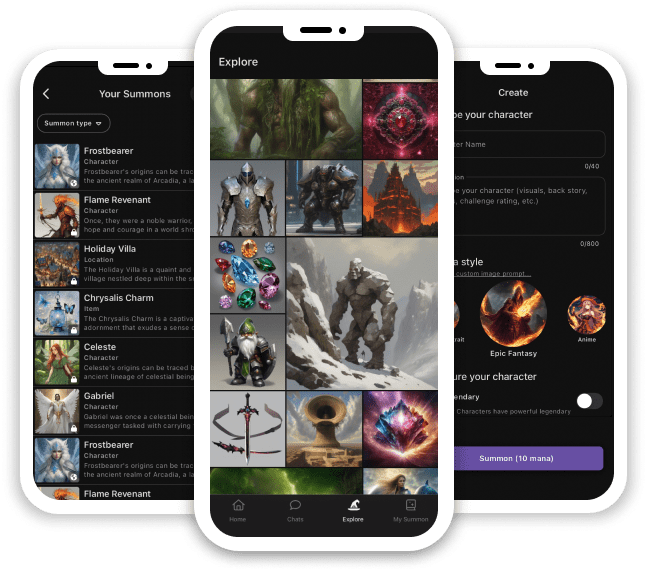
Common AI tools used (and their limits)
Many founders begin their journey with popular AI writing tools like:
- ChatGPT / Claude: powerful for generating ideas, stories, onboarding scripts
- Jasper / Copy.ai: great for marketing flows, dialogues, or email logic
- Sudowrite: narrative-first AI engine designed for fiction, but adaptable to UX writing
However, while these tools are useful for prototyping, they’re not turnkey solutions for app integration.
Here’s what they don’t do:
- Maintain narrative consistency across sessions or users
- Store world logic in databases (character memory, branching outcomes)
- Offer seamless frontend integration into real-time UX
- Allow product-level logic customization (AI reacting to KPIs, user progress)
This is where working with an experienced dev partner becomes essential. Founders need more than just a writing assistant, they need a system.
To create a true AI product, the AI must be embedded into the logic of the platform, not just its content. That’s the next section’s focus.
Let’s explore how to bring your app to life, custom, scalable, and future-ready.
Want to Build a Story-Driven App? Here’s What to Look for in Your Dev Partner
If you’re ready to turn your narrative-based product vision into reality, the next big decision is choosing a development team that understands both creative AI and functional app infrastructure.
What your dev team needs to understand
Worldbuilding-powered products aren’t built like traditional apps. They require more than just frontend design and backend development. Founders need a team that understands:
- Narrative logic systems: Building story arcs, character databases, and memory systems
- Generative AI architecture: Integrating AI content generation tools like GPT, Claude, or proprietary LLMs
- UX systems that adapt: Interfaces that change based on user input, session history, or behavioral data
- App modularity: So narrative content can plug into onboarding, gamification, or coaching flows
Your development partner should go beyond execution, they should co-create your product as a narrative system.
Unfortunately, most generalist dev agencies lack the creative or technical fluency to work in this space. They can implement features, but not stories.
Why OpenForge specializes in this space
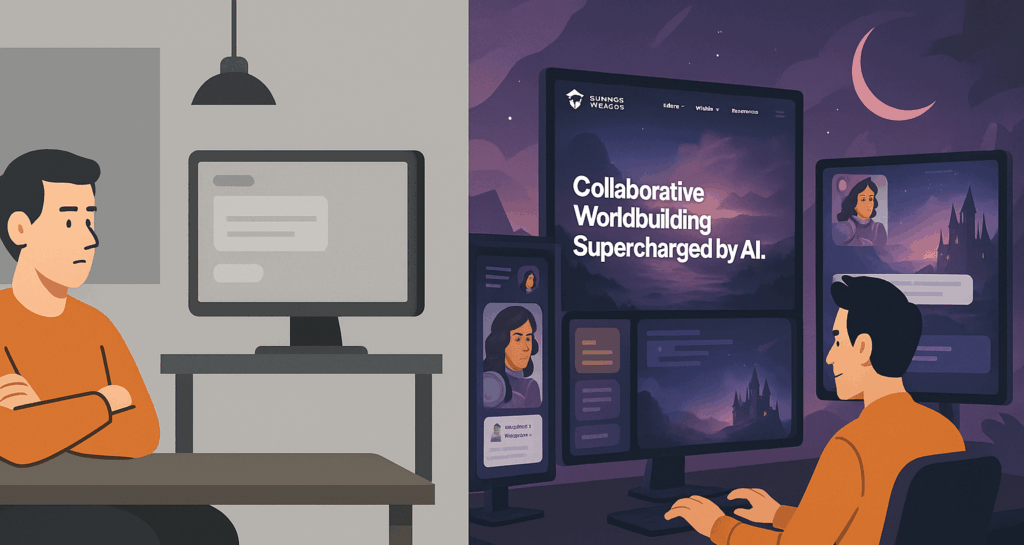
At OpenForge, we’ve helped startups and product teams across education, wellness, writing, and entertainment industries launch AI-integrated, worldbuilding-powered apps from idea to MVP.
What sets us apart:
- ✅ Experience integrating AI features using GPT, Claude, and open-source LLMs
- ✅ Deep understanding of storytelling app UX design patterns
- ✅ Technical architecture for AI integration at scale
- ✅ Human-first, agile process that bridges creativity and code
We don’t treat AI like a bolt-on feature. We treat it like part of your product’s soul. And we build accordingly.
Whether you’re building a platform for creators, a gamified coaching app, or a fictional universe powered by prompts, we help founders transform their ideas into functional, scalable products that users feel.
A checklist for building your AI-powered storytelling app
Not sure what to ask a dev team before you start?
Here’s a practical checklist to help you vet the right partner:
✅ Do they understand how AI storytelling works within UX logic?
✅ Can they integrate structured content systems like worldbuilding frameworks?
✅ Do they support prompt app architecture or modular narrative design?
✅ Can they help you go from idea to MVP, including LLM integration?
✅ Have they worked with creative founders and SaaS tools before?
If you’re nodding along, then you’re ready to take the next step
Build the Next Great Storytelling App, With the Right Tech Partner
The most successful apps in 2025 won’t just function, they’ll feel. They’ll guide users through immersive experiences, adapt like living worlds, and create emotional loyalty through narrative.
Worldbuilding tools as strategic UX

What began as tools for fiction writers have now evolved into some of the most powerful frameworks for app founders. Worldbuilding tools, when combined with AI, allow you to:
- Craft modular onboarding with story arcs
- Embed character-driven logic into user flows
- Generate dynamic content that adapts with each session
- Deliver a product that users don’t just use, they explore
Whether you’re launching a storytelling app, building a wellness platform, or experimenting with creative AI content generation, these tools can anchor your product in meaning and differentiation.
And with tools like Summon Worlds, AI Dungeon, or your own proprietary universe, the future is in your hands.
Why founders need the right development partner
To make this vision real, founders need more than code. They need a team that speaks the language of:
- Creativity + Engineering
- Narrative UX + App Infrastructure
- Open-ended AI logic + Scalable delivery
That’s where OpenForge comes in. We specialize in helping creative entrepreneurs and SaaS innovators turn big, narrative-driven ideas into custom-built products, complete with AI, storytelling logic, and beautiful user experiences.
Frequently Asked Questions
Worldbuilding tools help founders design immersive, story-driven user experiences by structuring content, logic, and narrative paths inside their apps. In app development, they are used to build modular worlds, adaptive onboarding systems, gamified experiences, and AI-generated content frameworks.
Founders can use worldbuilding tools to map out emotional journeys, define user roles (like characters), and create branching experiences that respond to actions. These systems increase session time, user engagement, and retention, especially when paired with AI storytelling tools.
In 2025, users expect apps to feel human, adaptive, and emotionally resonant. According to Gartner, 70% of users make decisions based on emotional connection. AI storytelling and worldbuilding tools help apps meet these expectations by blending generative content with narrative UX.
The key benefits include: Scalable content creation, Personalized user journeys, Reduced time-to-market for MVPs, Deeper emotional engagement, Enhanced storytelling without a full content team. Tools like ChatGPT, Claude, and Summon Worlds let founders prototype and expand their worlds quickly, ideal for startups.
Look for a team with: Experience in AI integration and storytelling app architecture, Understanding of worldbuilding logic and content systems, Proven success working with creative entrepreneurs and SaaS tools, A consultative approach to UX and product design.
References
Salesforce. (2024). State of the Connected Customer, 7th Edition.
https://www.salesforce.com/en-us/wp-content/uploads/sites/4/documents/research/State-of-the-Connected-Customer.pdfHeliverse. (2025). How AI Is Transforming Content Creation in 2025.
https://www.heliverse.com/blog/how-ai-is-transforming-content-creation-2025


